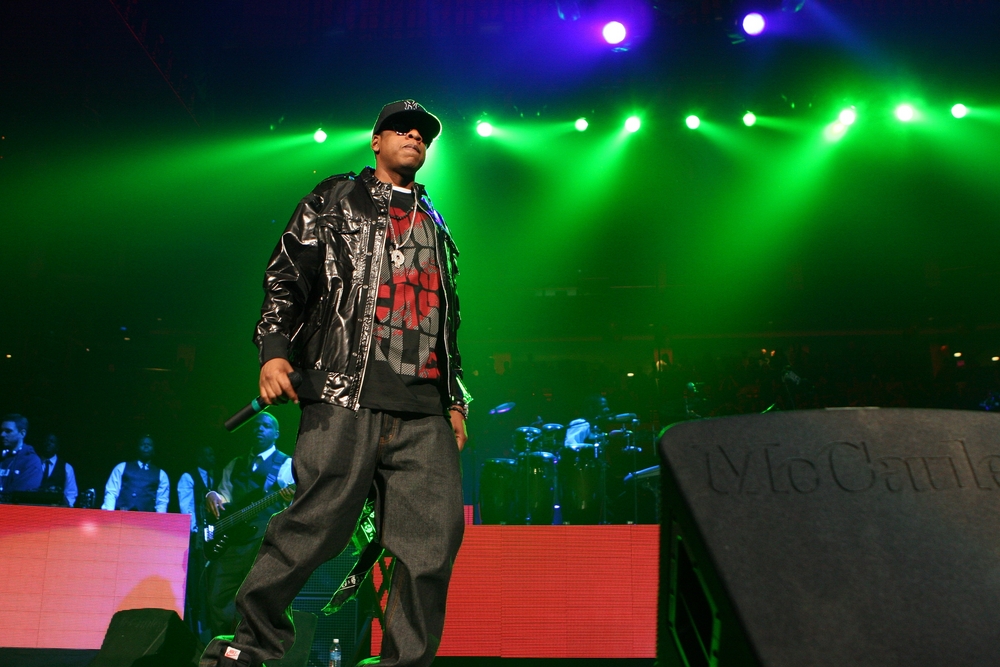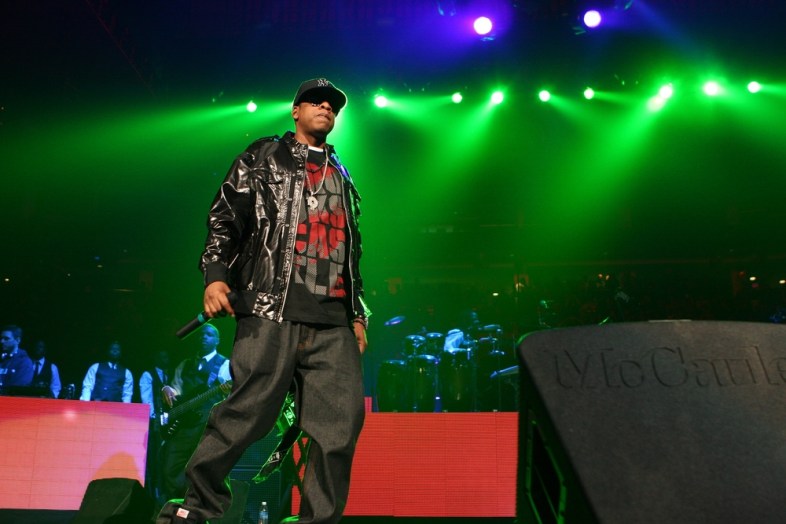For the Artists, By the Artists: Tidal and Spotify’s Place In The World Of Online Streaming


When Daniel Ek founded Spotify in 2006 with Martin Lorentzon, the goal was a universal access to free music. It was, of course, met with much apprehension. A lot of companies declared the proposal unbelievable, and said that the freemium model would kill the music business. Ek believed the opposite. He went from record label to record label, working to get partnership deals. His proposition: Spotify would save the industry. All he needed was someone to trust in him.
Says Ek in a previous interview with The Guardian: “The music industry was in the shitter. What did they have to lose? On top of that, I literally slept outside their offices, coming in week after week, hammering them down argument by argument…There was this paradox. People were listening to more music than ever in history and yet the music industry was doing worse and worse. So the demand for content was there but it was a different business model.”
By the time it launched in 2008, the concept had given way to a massive stampede on the internet. In a world of illegal file-sharing and a changing attitude with regards to listening to music, there was nothing more seductive than the word “free.”By January of this year, the company has 60 million active users in its database, 15 million of which are paid subscriptions.
What does “free” entail?
Nevertheless, the company has not been without reproach, especially from artists. Thom Yorke, the lead singer of the bands Radiohead and Atoms for Peace, is very disapproving of the service. He went so far as to pull his music off the site, and said that the practice of releasing a huge library of free tracks for public consumption is “bad for music.” The argument is that if people are listening to something that’s free, then how do artists get paid? How do they get the support they need? Yorke’s refusal to bestow his blessing can be seen as a testament to injustice of the arts. In fact, he described online streaming as “the last desperate fart of a dying corpse.”
Taylor Swift, who has transformed herself over the years into the music mogul that she is today, is also one of the big names to remove her catalogue on Spotify. She similarly refused to release her latest album “1989” online except to retailers like Amazon and iTunes, to the disappointment of fans. Critics call it a protest against music devaluation. Elaborating further in an article she wrote in the Wall Street Journal: “Music is art, and art is important and rare. Important, rare things are valuable. Valuable things should be paid for. It’s my opinion that music should not be free, and my prediction is that individual artists and their labels will someday decide what an album’s price point is. I hope they don’t underestimate themselves or undervalue their art.”
Ek responds: “The music industry is changing – and we’re proud of our part in that change – but lots of problems that have plagued the industry since its inception continue to exist…we’ve already paid more than $2 billion in royalties to the music industry and if that money is not flowing to the creative community in a timely and transparent way, that’s a big problem.”
He continues: “Here’s the overwhelming, undeniable, inescapable bottom line: the vast majority of music listening is unpaid…If we want to drive people to pay for music, we have to compete with free to get their attention in the first place. More than 80% of our subscribers started as free users. If you take away only one thing, it should be this: No free, no paid, no $2 billion.”
A new wave of competition
As the issue continues to polarize a lot of people – artists and listeners alike – Jay Z, known as both a talented rapper but an even more successful producer and businessman, launched Tidal at a star-studded event in New York last March. Backed by leading musicians such as Beyonce, Kanye West, Usher, and Madonna, among others, it is being touted as “the first artist-owned music service.”
Might it be the answer to the legitimate concerns plaguing the industry? Jay Z surely has his intentions, and they are straightforward and strategic. Tidal does nearly the same thing as Spotify – however, it comes with a price tag. With this, Jay Z wants to revive the value and respect behind good music, and aims to uplift the craftmanship behind every lyric and every tune by making each penny in your pocket worth the song that you are paying for: “People are not respecting the music, and devaluing what it really means. People really feel like music is free, but will pay $6 for water. You can drink water free out of the tap and it’s good water. But they’re okay paying for it. It’s just the mindset right now.”
This seems to be the message a lot of artists want to impart – that nothing worth having comes easy. This is perhaps one nugget of wisdom that Spotify ostensibly did not incorporate in its journey towards multi-billion dollars’ worth of success. Says Alicia Keys at the launch: “Our goal is simple: We want to create a better service and a better experience for both fans and artists. We believe that it is in everyone’s interests — fans, artists and the industry as a whole — to preserve the value of music, and to ensure a healthy and robust industry for years to come.”
Tidal’s endeavor is geared towards rewarding artists for their creativity, and fans for their loyalty. Currently it has signed up 16 artists who are the first stakeholders of the company. The idea is that they will provide exclusive content that will not be available anywhere else. Listeners can subscribe for $19.99 monthly to gain access to high-definition audio, or $9.99 for standard definition. Predictably, nothing is free.
Will that be enough to get users to leave their comfort zones and do the “right” thing and join Tidal? By the looks of it, it will be a difficult road to tread upon, in face of consumer behavior and the technology available for everyone. Rihanna debuted her latest video of “American Oxygen” on the platform, yet it eventually found its way to YouTube. Although the latter claims to put down such derivative uploads quickly, admittedly, it is hard to keep up with the times especially when consumers are getting wiser by the day.
Too, there are those who are not that happy or excited about Jay Z and Friends, all millionaires in their own right, earning even more money from consumers who do not have much to begin with. The hashtag, #TIDALforALL, originally intended to promote the service, has been inundated with posts from fans who are cynical about paying musicians who are already (and obviously) very wealthy.
Even Mumford and Sons, Grammy winners and beloved folk rock band, is not buying it. In an interview with The Daily Beast, frontman Marcus Mumford says, “…[W]hen they say it’s artist-owned, it’s owned by those rich, wealthy artists… We just want to play music, and I don’t want to align myself with Spotify, Beats, Tidal, or whatever. We want people to listen to our music in their most comfortable way, and if they’re not up for paying for it, I don’t really care.”
Guitarist Winston Marshall adds, “We don’t want to be part of some Tidal ‘streaming revolution’ nor do we want to be Taylor Swift and be anti-it…Music is changing…This is how people are going to listen to music now—streaming.“
Online streaming is a reality
In the age of smart phones and social media, online streaming has become the norm for distributing content and media. Anyone who says otherwise is clearly behind or perhaps in denial of progress.
Aside from Spotify and Tidal, other popular services exists to cater to different tastes and demographic. For example, SoundCloud is home to indie musicians and aspiring DJs, who upload their remixes on the site and share it with a small group. Listeners can interact by leaving comments directly on the track, pinpointing the exact point in the music that they liked.
Audioboom, meanwhile, has become everybody’s favorite place to upload their own recordings – a YouTube for spoken word, if you will – as well as the platform with which one can follow podcasts, newscasts, audiobook channels, and more. Its partnership with leading media organizations such as the BBC, NPR, SkySports, to name a few, illustrates how a lot of people now have a desire to consume content in this form and manner.
In an article in The New Yorker, Sasha Frere-Jones asks: “What are recordings now? Are they an artistic expression that musicians cannot be compensated for but will create simply out of need? Are they promotional tools? What seems clear is that streaming arrangements, like those made with Spotify, are institutionalizing a marginal role for the recordings that were once major income streams for working musicians…
Damon Krukowski, on the other hand, believes in free music: “[W]hat seems to have emerged most powerfully for the industry is cooperation between major labels– the epitome of centralized, hierarchical business models– and the computing industry (Apple, Spotify, Pandora). What’s missing from that is…the defining characteristic of the Net: decentralized physical and human capital, i.e., musicians and music fans.
“Somehow, we keep being left out of the equation…nobody can really claim digital streams as exclusive property. So let them flow freely– from everyone, fans included– instead of only from companies that have cut deals with the copyright holders…What I am envisioning is something like what has developed for music posting via YouTube, but allowed to proliferate throughout the network, without corporate control over context or quality. Perhaps that kind of competition would spark newly cooperative ideas, and take us away from the antagonistic relationship between much of the music business on one hand, and the network of musicians and fans on the other. The century is still young.”
There are many different arguments for online streaming as a whole, and its effects on both culture and industry. As the struggle to find a compromise point continues, it is important to be aware of both sides before completely shunning one perspective for another. ![]()




